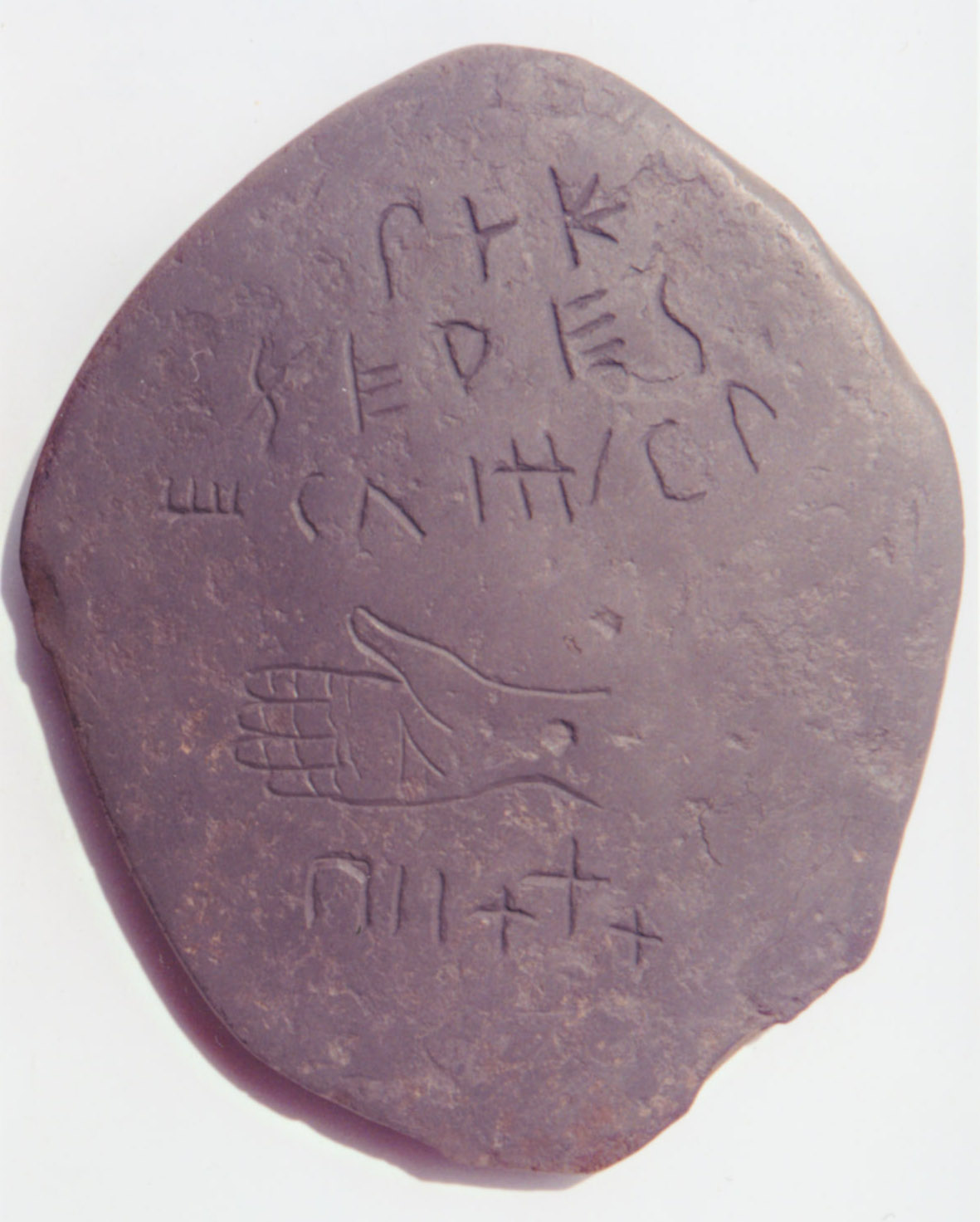
Line 1

Read Right to Left.
The first ל depicted here as the two vertical strokes. It is commonly used as a preposition for “To”.
There are many dictionary entries for תל. The most appropriate is תלה which means to “leave in doubt”.
פל(י)ת – Dictionary entry states “Wonderful”. The Yod is not present in the stone.
Upside down V with two strokes to the right I usually translate to mean Mariners. But in reality it means “To Water”. In this context, I think it may be referring to baptism.
Translation of Line 1:
To leave in doubt wonderful baptism,
Line 2

תפת – Hell

לד – Birth

לסכת – First letter ל is for “To”. סכת could mean “sect” or more likely it means “To hear”.

Translation of line 2
hell is born (continuation of first line by putting off baptism). To hear…..
Line 3

דחת is taken from Google Translate. The dictionary is more obscure.

יהו is a well know term for those who study this from the Michigan Artifacts and Burrows’ stones perspective. It sometimes refers to God and is displayed over the head of Jesus while hanging on the cross. It also is used as a trademark for a people living during this time period – my choice meaning “The People of God”. In this context it refers to God or more likely Jehovah. The term is also used in the Bat Creek Stone.
מד is a shortened word more commonly spoken as מדבר and means “to speak”. It is used hear to reference God’s spoken word.

Translation of line 3:
(To hear that ) you have rejected God’s words,
Line 4

To demostrate that the יה means Jesus, compare to the below writing of the name of Jesus as יהסהו found on line 2.

It is possible that the יה in this context is not referring to Jesus, but instead could be referring to another person whose name begins with יה.
מף – There are many words that could be derived in the dictionary as מף. The word Urge is just one of many. I have selected that word as it fits the context. Explained is another option.
כבס – Google Translate gives the word “Wash”. This translation is backed up with a close spelling from the dictionary.


The final word is the two vertical strokes followed by the upside down V. I shall repeat here what I described above from line 1.
Upside down V with two strokes to the right I usually translate to mean Mariners. But in reality it means “To Water”. In this context, I think it may be referring to baptism.
Translation of Line 4:
Jesus urges you to wash in the waters of baptism.
Complete Translation:
To leave in doubt wonderful baptism, hell is born. In hearing you have rejected God’s words, Jesus (יה) urges you to wash in the waters (of baptism).
